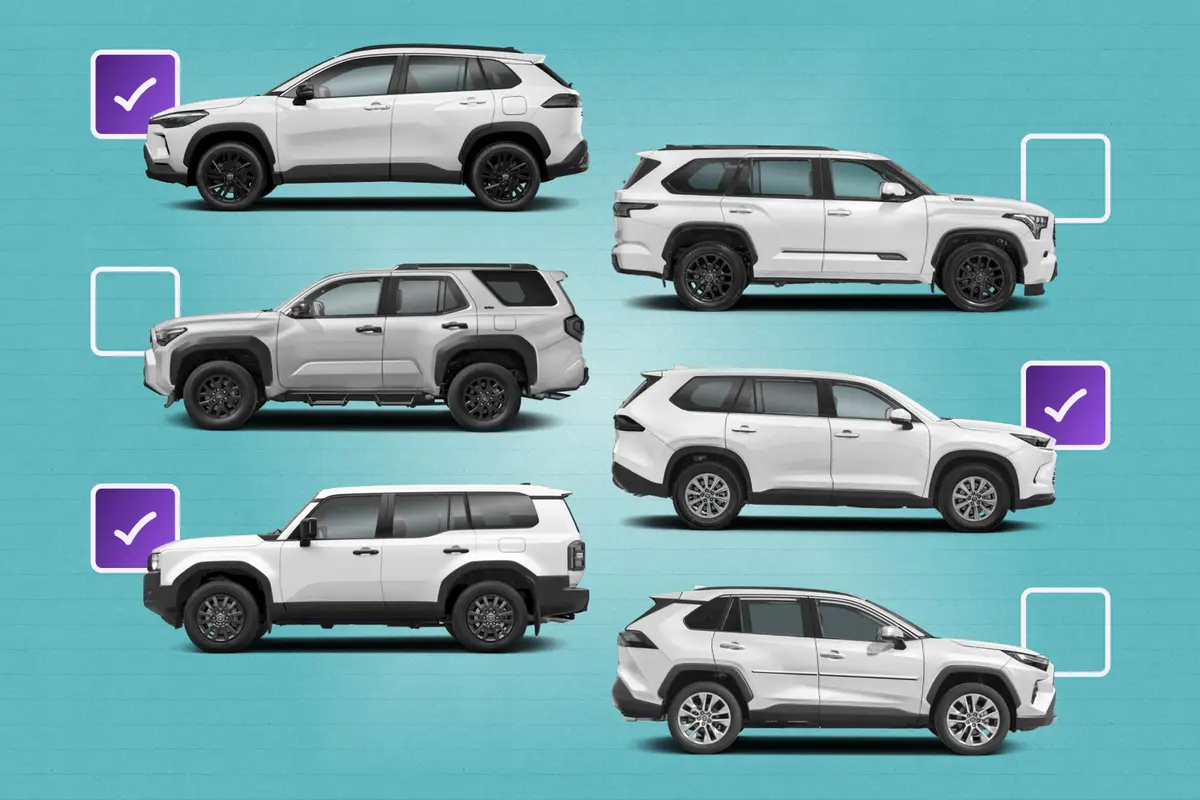Towing? 5 Things to Never Overlook
The news that the heavy-duty 2013 Ram 3500 with a gooseneck has trailering capacity of 30,000 pounds brings into focus the important issues of hitches and other towing concerns.
The Hitch Truth
Tip No. 1: Know Your Hitch Rating
The problem is that pickup trucks are outgrowing their hitches. The Society of Automotive Engineers has a J standard up to a Class IV receiver hitch with a rating up to a 10,000-pound trailer. We should note the SAE hitch testing is a static load test, but we've heard there are plans for a new SAE J standard rating for a 20,000-pound receiver hitch in a dynamic test in the future.
Now so-called Class V receiver hitches are here, and they are solely a creation of the truck manufacturers and hitch companies. The truth is that receiver hitches, for about the last five years, have been "rated" by the truck manufacturers for their heavy-duty truck lineup. Like some tire ratings, the hitch rating comes from the truck manufacturer and can most often be found in owner's manual and on the driver's side doorjamb.
SAE J684 Rating Classifications
Class I: Up to a 2,000-pound trailer (considered lightest-load situations)
Class II: Up to a 3,500-pound trailer (considered light-load situations; six-cylinder engine needed)
Class III: Up to a 5,000-pound trailer (considered medium-load situations; certain six- and eight-cylinder engines needed)
Class IV: Up to a 10,000-pound trailer (considered large-load situation; eight-cylinder and turbodiesel engines needed)
Believe it or not, however, there is a benefit to truck makers rating Class V hitches. Because the truck manufacturer sets the hitch rating, there's much less confusion between what's in an owner's manual and what is on the truck hitch safety sticker. In fact, most newer trucks don't have a sticker on the hitch at all, so drivers have to read the manual to find out the truck's hitch rating for weight-distributing situations and weight-combined ratings.
Effectively, no matter who makes the Class V hitch on a new truck, the truck manufacturer incurs the liability. That makes sense because the truck makers are giving specs to hitch makers to meet the desired rating sought for a given pickup. It gets a little murky when a used pickup truck gets an after-market receiver hitch. In that situation, the tow rating is likely to be lower when it is compared to the same truck that has the same hitch installed when the truck was new.
Thankfully, receiver hitches are generally standard nowadays on three-quarter-ton and one-ton trucks. A factory-installed receiver hitch and gooseneck frame hitch is likely to give a truck manufacturer the opportunity to add another crossmember or two on the ladder frame to increase load and carrying capacity.
Trailer Brakes
Tip No. 2: Brake Inspection Is a Matter of Life and Death
Trailers (and the trailer industry) are not as tightly regulated as pickup trucks and as a result are not as advanced. In fact, trailers in the U.S. are not as advanced as their counterparts in Europe and Australia.
Although crew-cab short-bed pickups have been the most popular truck choice for more than a decade, gooseneck and fifth-wheel trailers usually won't fit in short-bed trucks without a neck extension or a complicated sliding hitch. Then there's the brake issue: While your car or truck likely has hydraulic disc brakes on the front (and many modern vehicles have hydraulic disc brakes all around), electric drum brakes are the most common on trailers.
In Europe, trailers have to have self-actuating brakes, and tongue weight there can't exceed 4 percent of the total trailer weight.
In Australia, trailers more than 10,000 pounds are required to have air brakes, as semi-trucks here are. All gooseneck trailers in Australia have 3-inch gooseneck balls instead of the 2 5/16-inch ones we use in the states. Hydraulic disc brakes are used on our trucks because they are powerful, dependable and create less heat, but there is no such requirement for our trailers now; that difference is certainly something to keep in mind when considering your own (or next) trailer.
Wiring Weakness
Tip No. 3: Check and Recheck Your Trailer's Wiring (and Check Again)
Wiring is one of the most often overlooked problems with electric drum brakes. Wires going to the trailer brakes continually flex with the axle movement. Hydraulic trailer brakes typically use steel lines that go to each wheel, and they are connected by a hydraulic hose to the brakes, made to flex with the wheel motion. Additionally, brake wires and brake light wires need to be ground back through the plug to the truck. Most trailers run the ground wire at each light and brake to an external screw in the trailer frame, and that ground is usually the first place to look for trouble when a light stops working.
SAE, truck manufacturers, trailer manufacturers and trailer wiring companies are all working on a new, safer trailer plug. What we have now is an RV plug with seven blades sliding into brass plates, and they can lead to arcing when the trailer wire overflexes or bounces excessively. This arcing can cause added corrosion, and if one of the seven connections in the trailer plug happens to be a corroded ground or brake wire, you may have no trailer brakes and not even know it.
Trailer Axle Ratings
Tip No. 4: Make Sure You Have Enough Axle for Your Trailer GVW
Pay particular attention to how the gross vehicle weight rating of your trailer is calculated. A truck manufacturer calculates tow ratings this way: Take the truck's gross combined weight rating and subtract the truck's actual curb weight (with fuel tank and fluids filled). The result is your maximum trailer weight. But don't forget that the gross loaded trailer tongue weight (or the weight that the trailer transfers to the truck's bumper or bed) is part of the truck's payload weight and is not normally included in the trailer's total weight.
Based on that practice, a trailer company typically chooses axles rated for the weight of the trailer after it's been attached to a truck. In that scenario, the tongue weight isn't the trailer manufacturer's problem, and it won't be factored into the trailer's GVW. This allows trailer manufacturers to use lighter axles. For example, a trailer maker could choose two 7,000-pound-capacity axles instead of a pair of 8,000-pound-capacity axles, even if the trailer GVW was 16,800 pounds. Here's how that works: Two 7,000-pound axles should mean 14,000 pounds of capacity, but if you add 20 percent tongue weight, the factory trailer GVW could be 16,800 pounds. Or, the other way around, 20 percent of a 17,500-pound trailer is 3,500 pounds; subtracted from the total trailer GVW of 17,500 pounds, that equals 14,000 pounds, or two 7,000-pound-capacity axles.
A trailer's GVW, as well as its axle ratings, are listed on the manufacturer's vehicle identification number tag. Take note: In some states, law enforcement goes by the axle ratings and not the trailer's GVW. The resulting fines can be costly, especially if police discover a discrepancy after an accident.
Interviews with manufacturers about trailer ratings and tongue weight revealed that some use a 20 percent tongue weight for calculations and others (including users of horse-trailers and construction trailers, whose axles sit farther back) use as high as a 25 percent tongue weight. Gooseneck wedge trailers, which are open rail-car haulers (typically with cars loaded on top of the gooseneck), can have a tongue weight reaching and exceeding 30 percent. The point we're making here is that the often-cited "normal" 20 percent of tongue weight is not necessarily the standard.
A Little Help
Tip No. 5: Find a Product That Can Improve One or All Issues
We expect trailers and their accessories to get better and stronger. In fact, one option that we like (it addresses many of the issues we've brought up here) is the Automated Safety Hitch. It's an auxiliary pickup truck axle that attaches with a three-point receiver hitch, linking it horizontally to a truck's frame. It has a gooseneck or fifth-wheel hitch, so your trailer physically attaches to it and not the tow vehicle.
It has a steerable axle with its own dedicated hydraulic disc brakes, and it has an adjustable weight-distributing function to better distribute the trailer's tongue weight between the truck's axle and the Safety Hitch. This effectively gives you two rear axles (like a semi-truck) to carry and distribute your load, and it gives you an extra braking axle to boot.
Finally, because the trailer attaches behind the truck, it corners more like a bumper-pull trailer, pulling the trailer past the corner with a shorter turning radius, providing a less stressful towing experience.

Featured stories



